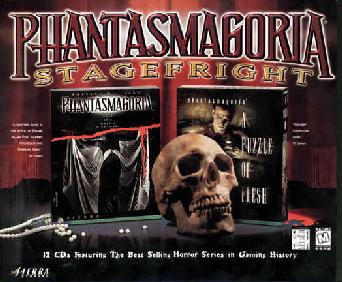

It was not long before Robertson was touring Russia and Spain, and the idea of the theatrical ghost show spread across Europe and to the U.S. In an abandoned Capuchin crypt in Paris, he staged hauntings, using several lanterns, special sound effects and the eerie atmosphere of the tomb, he terrified many audiences. The macabre atmosphere in the post-revolutionary city was perfect for Robertson's elaborate creations. In 1797 Robertson took his show to Paris. The most famous of the ghost showmen was the Belgian inventor and physicist from Liège, Etienne-Gaspard Robert, more commonly known by his stage name Etienne Robertson. Paul Philidor created what may have been the first true phantasmagoria show in 1789, a combination of séance parlor tricks and projection effects, his show saw success in Berlin, Vienna, and revolution-era Paris in 1793.

In the 1770s François Seraphin used magic lanterns to perform his "Ombres Chinoises" (Chinese shadows), a form of shadow play, and Edme-Gilles Guyot experimented with the projection of ghosts onto smoke. Versailles was home to several significant developments in this field. In 1774, he committed suicide, apparently a victim of delusions of his own apparitions Fact|date=October 2007. In the mid-18th century, in Leipzig, Germany, a coffee shop owner named Johann Schröpfer began offering séances in a converted billiards room which became so popular that by the 1760s he had transformed himself into a full-time showman, using elaborate effects including projections of ghosts to create a convincing spirit experience. Frightening images such as skeletons, demons, and ghosts were projected. The projector was mobile, allowing the projected image to move on the screen, and multiple projecting devices allowed for quick switching of different images. Phantasmagoria ( Audio|En-us-phantasmagoria.ogg|American pronunciation, also fantasmagorie, fantasmagoria) was a precinema projection ghost show invented in France in the late 18th century, which gained popularity through most of Europe (especially England) throughout the 19th century.Ī modified type of magic lantern was used to project images onto walls, smoke, or semi-transparent screens, frequently using rear projection.


 0 kommentar(er)
0 kommentar(er)
